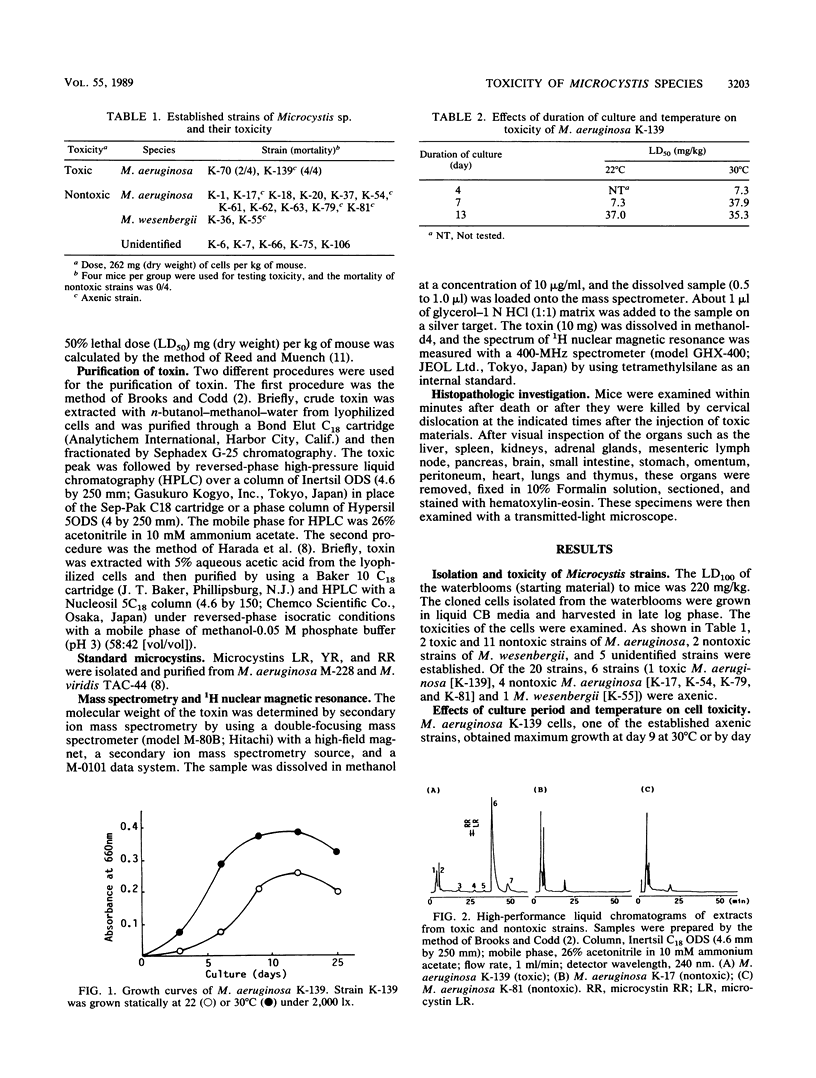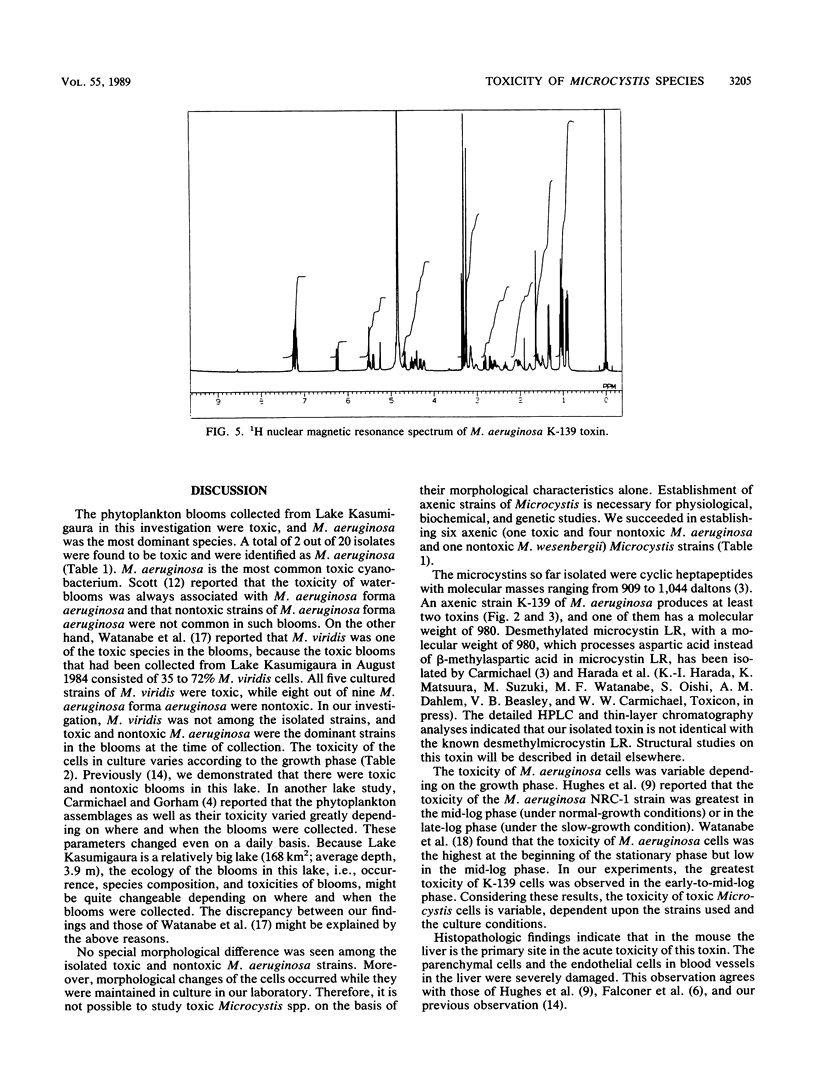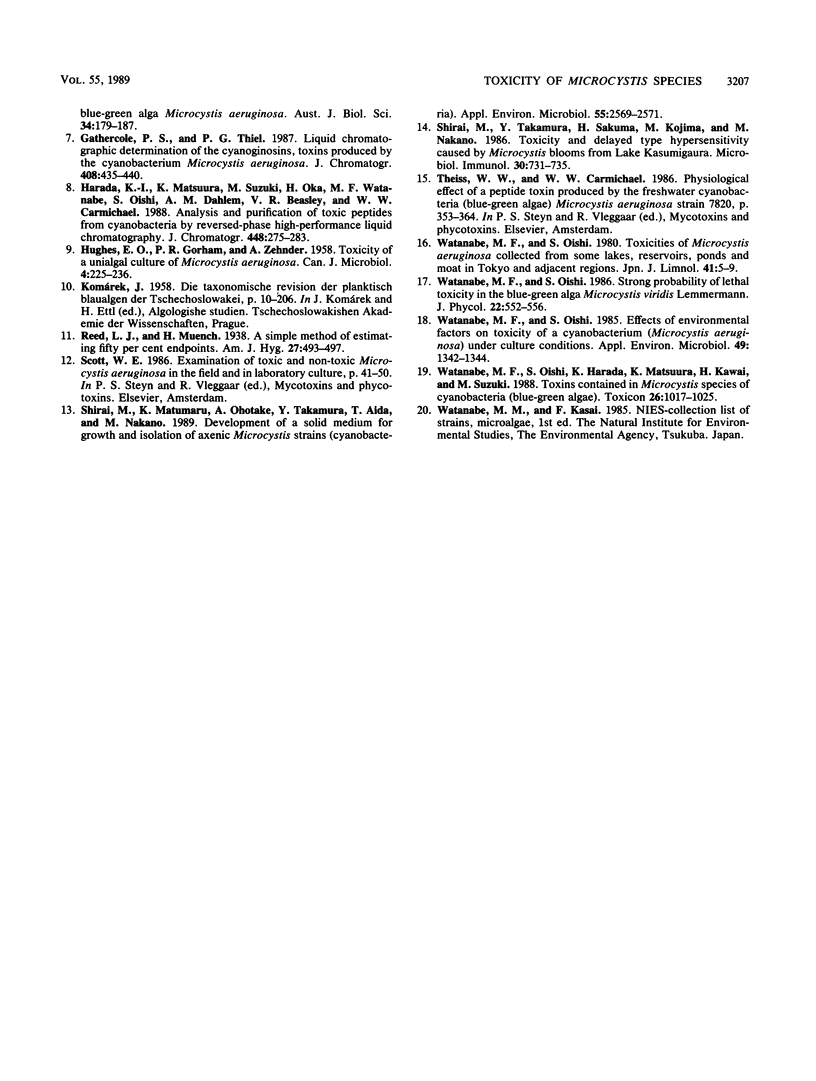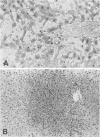Abstract
Microcystis strains (2 toxic and 18 nontoxic to mice) were isolated from toxic waterblooms that had been collected from Lake Kasumigaura, Ibaraki Prefecture, Japan, in August 1985. Thirteen of the strains (2 toxic and 11 nontoxic) were Microcystis aeruginosa, 2 (nontoxic) were Microcystis wesenbergii, and the other 5 were difficult to identify. Six (1 toxic and 4 nontoxic M. aeruginosa and 1 M. wesenbergii) of these 20 strains were established as axenic cultures. A toxic and axenic strain of M. aeruginosa, K-139, was used to study the relationship between growth conditions and toxicity. Cells in early-to-mid-log phase showed the highest toxicity (50% lethal dose, 7.5 mg of cells per kg of mouse), and maximum toxicity was not affected by growth temperatures between 22 and 30 degrees C. Purification and characterization of the toxins from K-139 cells were also conducted, and at least two toxins were detected. One of the toxins (molecular mass, 980 daltons) has not been reported previously. The main target of the toxin in mice was the liver. Marked congestion and necrosis in the parenchymal cells around the central veins of the liver were observed microscopically in specimens that had been prepared from the mice with acute toxicity after injection with the toxin.
Full text
PDF





Images in this article
Selected References
These references are in PubMed. This may not be the complete list of references from this article.
- Gathercole P. S., Thiel P. G. Liquid chromatographic determination of the cyanoginosins, toxins produced by the cyanobacterium Microcystis aeruginosa. J Chromatogr. 1987 Nov 6;408:435–440. doi: 10.1016/s0021-9673(01)81837-9. [DOI] [PubMed] [Google Scholar]
- HUGHES E. O., GORHAM P. R., ZEHNDER A. Toxicity of a unialgal culture of Microcystis aeruginosa. Can J Microbiol. 1958 Jun;4(3):225–236. doi: 10.1139/m58-024. [DOI] [PubMed] [Google Scholar]
- Harada K., Matsuura K., Suzuki M., Oka H., Watanabe M. F., Oishi S., Dahlem A. M., Beasley V. R., Carmichael W. W. Analysis and purification of toxic peptides from cyanobacteria by reversed-phase high-performance liquid chromatography. J Chromatogr. 1988 Sep 2;448(2):275–283. doi: 10.1016/s0021-9673(01)84589-1. [DOI] [PubMed] [Google Scholar]
- Shirai M., Matumaru K., Ohotake A., Takamura Y., Aida T., Nakano M. Development of a solid medium for growth and isolation of axenic microcystis strains (cyanobacteria). Appl Environ Microbiol. 1989 Oct;55(10):2569–2571. doi: 10.1128/aem.55.10.2569-2571.1989. [DOI] [PMC free article] [PubMed] [Google Scholar]
- Shirai M., Takamura Y., Sakuma H., Kojima M., Nakano M. Toxicity and delayed type hypersensitivity caused by Microcystis blooms from Lake Kasumigaura. Microbiol Immunol. 1986;30(7):731–735. doi: 10.1111/j.1348-0421.1986.tb02999.x. [DOI] [PubMed] [Google Scholar]
- Watanabe M. F., Oishi S. Effects of environmental factors on toxicity of a cyanobacterium (Microcystis aeruginosa) under culture conditions. Appl Environ Microbiol. 1985 May;49(5):1342–1344. doi: 10.1128/aem.49.5.1342-1344.1985. [DOI] [PMC free article] [PubMed] [Google Scholar]
- Watanabe M. F., Oishi S., Harda K., Matsuura K., Kawai H., Suzuki M. Toxins contained in Microcystis species of cyanobacteria (blue-green algae). Toxicon. 1988;26(11):1017–1025. doi: 10.1016/0041-0101(88)90200-0. [DOI] [PubMed] [Google Scholar]



